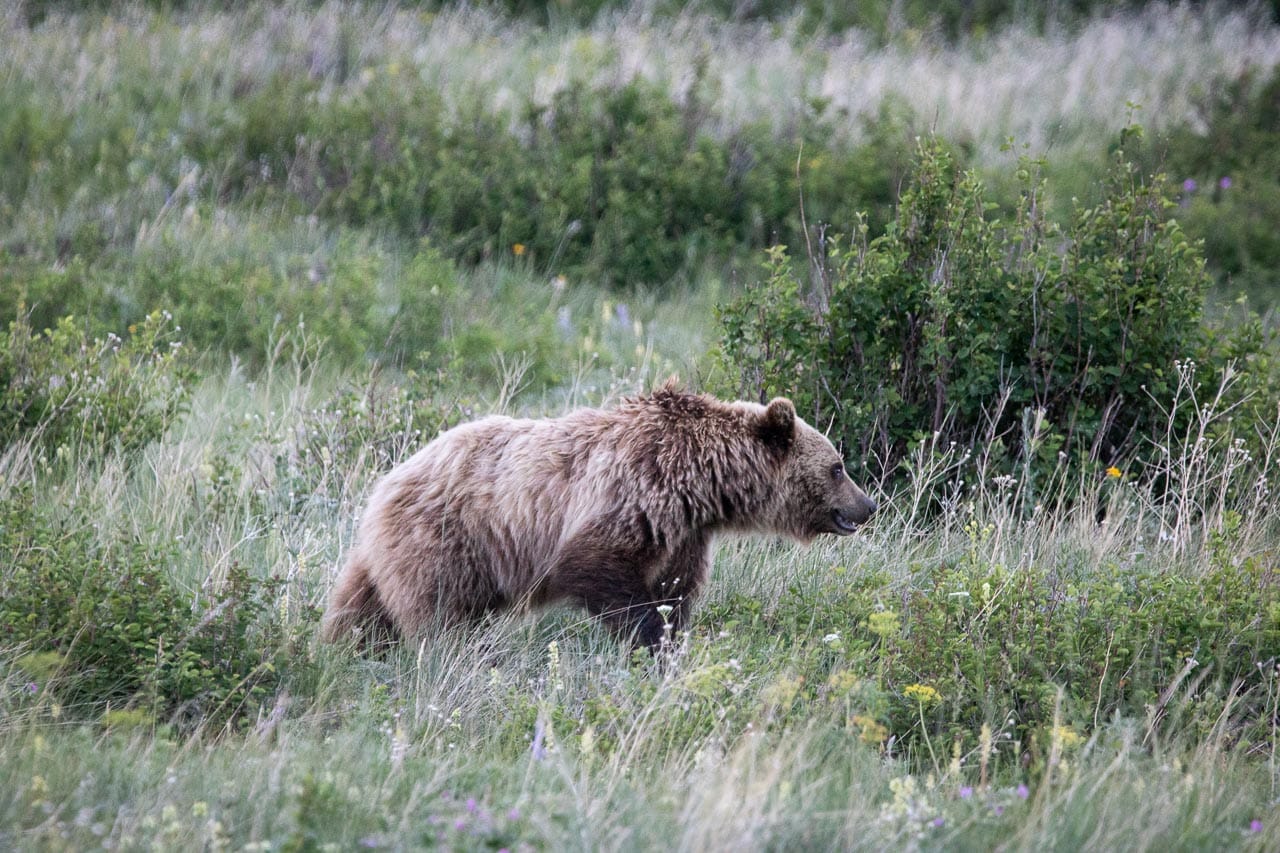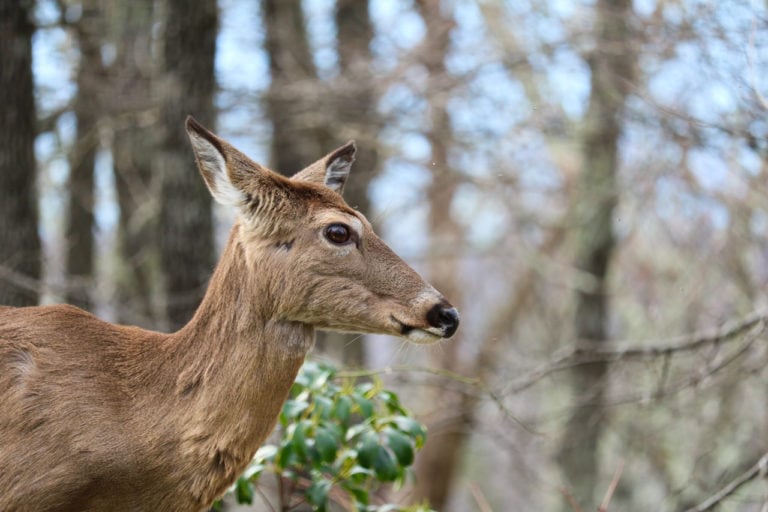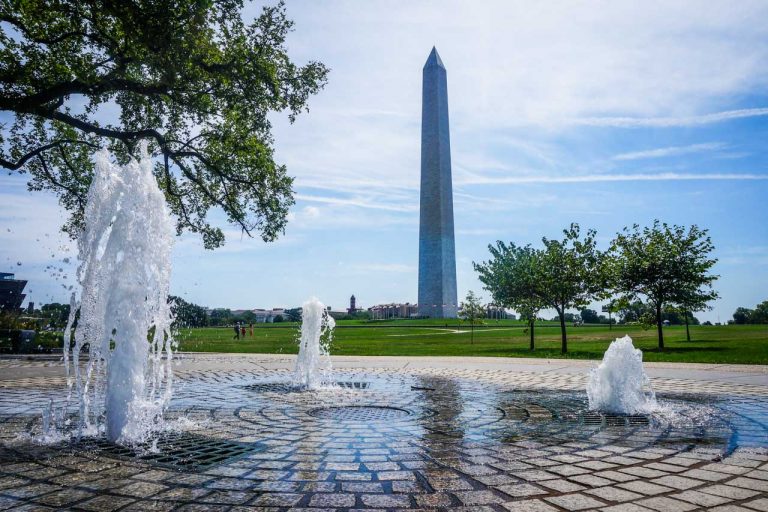16 Best U.S. National Parks for Wildlife Watching
You don’t need to venture too far from your front door to see animals. Even at home, you can see a wide variety of animals going about their daily lives.
Whether you live in a big city or small town, there’s usually a bunch of different birds flying around, while squirrels play in trees and deer forage in verges.
Watching wildlife in America is easier than you might think. If, however, you’d like to really focus on the “wild” in wildlife, you should consider visiting the following best national parks in USA for wildlife viewing.
This best national parks for wildlife viewing post contains affiliate links. You can read more about our Terms of Use / Disclosure here.
16 Best National Parks for Wildlife Watching in the USA
Yes, the USA has its huge cities and historic towns, but the vast majority of the country still consists of rugged mountain ranges, empty deserts and deep forests.
You don’t have to try hard to get away from America’s urbanity and the time-pressured stress that comes with city life. Wildlife, too, finds refuge in the wild lands in America’s national parks.
From the deserts of California to the coral reefs of the Virgin Islands, from the forests of the Blue Ridge Mountains to subarctic Alaska, the spectrum of America’s habitats is incredibly wide.
Diversity is, after all, the trademark of the country—not only in natural terms but also when it comes to cities, cultures, wealth, opinions and music.
This immense variety of habitats and biotopes results in a truly phenomenal biodiversity.
Dolphins and whales frolic in oceans, while buffalo roam plains, eagles soar the skies, and bears and mountain lions wander through forests. Wolves howl at the moon and rattlesnakes sunbathe on rocks, manatees bask in tropical waters and alligators lounge on riverbanks.
The number of iconic American mammals, birds and other creatures is virtually endless.
Interested in seeing America’s most famous animals in the wild? Visit one of these fantastic national parks for wildlife watching.
Yellowstone National Park, Wyoming, Idaho and Montana
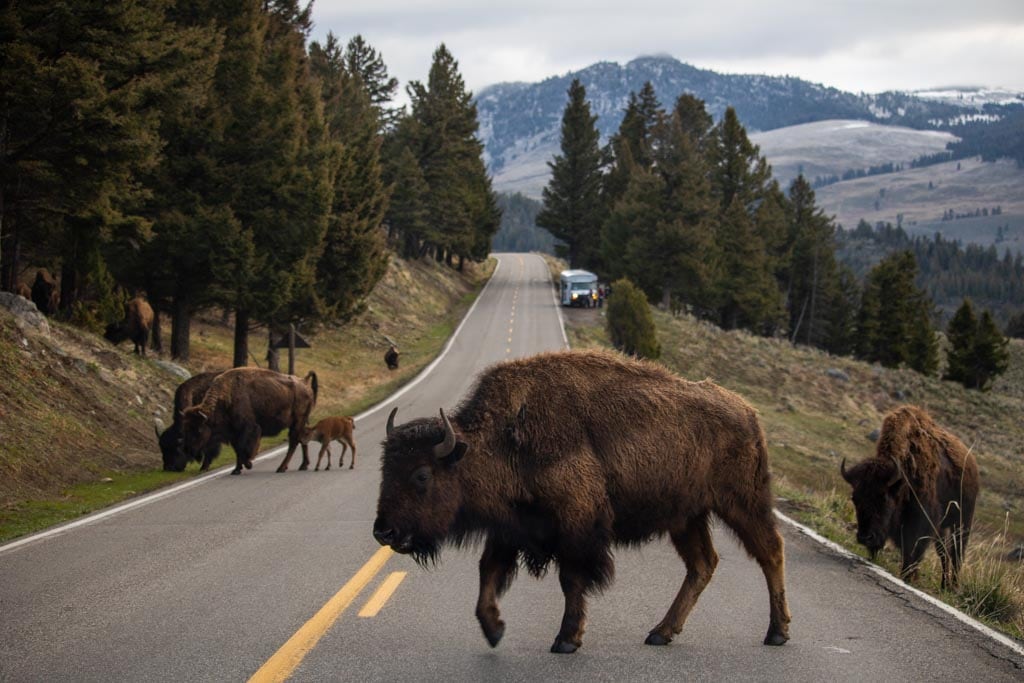
Established in 1872, Yellowstone National Park is the oldest national park in America (although Hot Springs National Park in Arkansas can claim that it’s the first protected land set aside by the federal government. In 1832 that was, decades before the concept of national parks was invented).
This is a logical choice for a first national park, though, encompassing a wide variety of natural features, from geysers to mountains and forests.
Yellowstone is also one of the most wildlife-rich areas in North America, arguably the number one of all U.S. national parks for wildlife watching. Many consider it to be the greatest place to see North American megafauna, the park being home to nearly 60 mammal species.
Those include basically all of the continent’s most iconic species, from wolves, black bears and grizzly bears to elk, moose, bighorn sheep and American bison, arguably the park’s main wildlife attraction.
Additionally, Yellowstone is also home to several of the most iconic national park birds. Those include bald eagles, trumpeter swans, ravens and sandhill cranes.
If you ever want to go on a national parks wildlife safari, it’s impossible to find a better place to do so than Yellowstone National Park. Yellowstone offers some of the best wildlife viewing experiences in North America.
- Look for these: American bison, wolves, black and grizzly bears, elk, bighorn sheep and moose, and bald eagles, trumpeter swans and sandhill cranes
- Do this: hiking, horseback riding, cycling and, in winter, snowmobiling and snowshoeing
More About Yellowstone National Park
- Park Website
- Travel Guide
- Topographic Map
- Top Places to Visit in Yellowstone National Park
- Best Things to Do at Mammoth Hot Springs (Yellowstone)
- Where to See Wildlife in Yellowstone National Park
- Best Spring Hikes in Yellowstone
- Accommodation
Grand Teton National Park, Wyoming
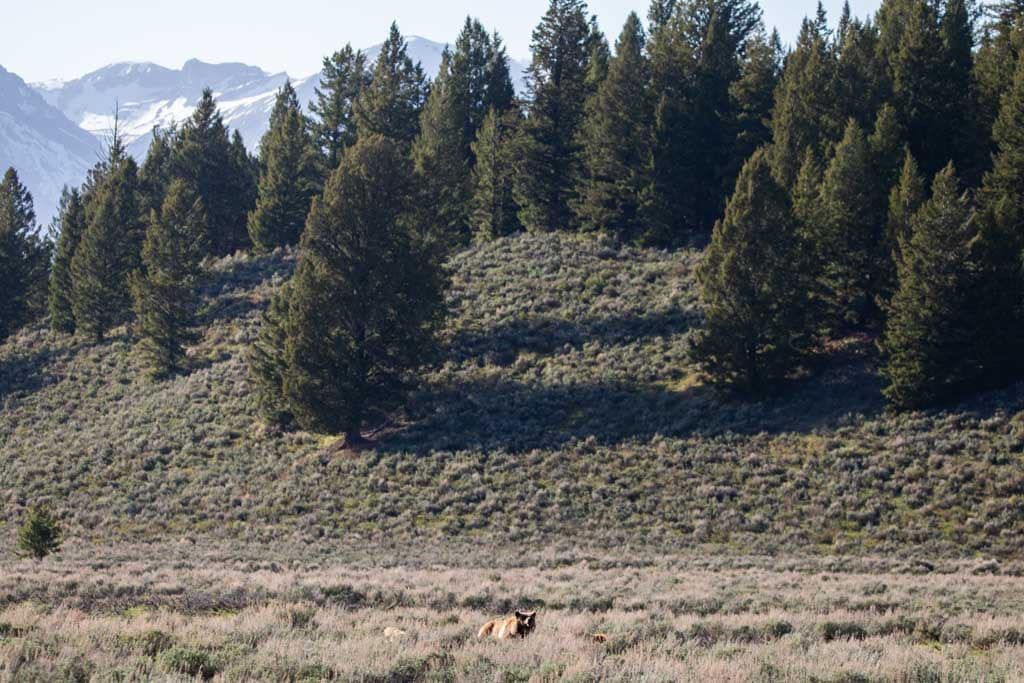
One of the great joys of spending time in Grand Teton National Park is the amazing opportunity to see wild animals. From bison, elk and moose to black and grizzly bears, yellow-bellied marmots and countless birds, the wildlife watching in Grand Teton National Park is among the best in the national park system.
Yellowstone’s smaller neighbor to the south, Grand Teton is also part of the Greater Yellowstone Ecosystem, which absolutely bustles with wildlife. The species of animals you can see in Grand Teton National Park are similar to Yellowstone, with one major exception: moose.
Grand Teton National Park is one of the country’s top places to see moose in the wild. Look for them in swampy areas and along riverbanks. Lucky hikers might also see them near alpine lakes and stands of willows.
Additionally, this park also encompasses habitats ideal for bison, pronghorn and elk, as well as gray wolves and bears. Visit one of the scenic overlooks in Grand Teton in the morning, especially Oxbow Bend, Blacktail Ponds and Willow Flats, for the best wildlife viewing opportunities.
- Look for these: bison, moose, elk, pronghorn, grizzly bears, black bears, river otters, beavers and bald eagles
- Do this: hiking, scenic driving, kayaking and canoeing
More About Grand Teton National Park
- Park Website
- Travel Guide
- Topographic Map
- Best Grand Teton Hikes
- Top Things To Do in Grand Teton National Park
- Where to See Wildlife in Grand Teton National Park
- Accommodation
Channel Islands National Park, California
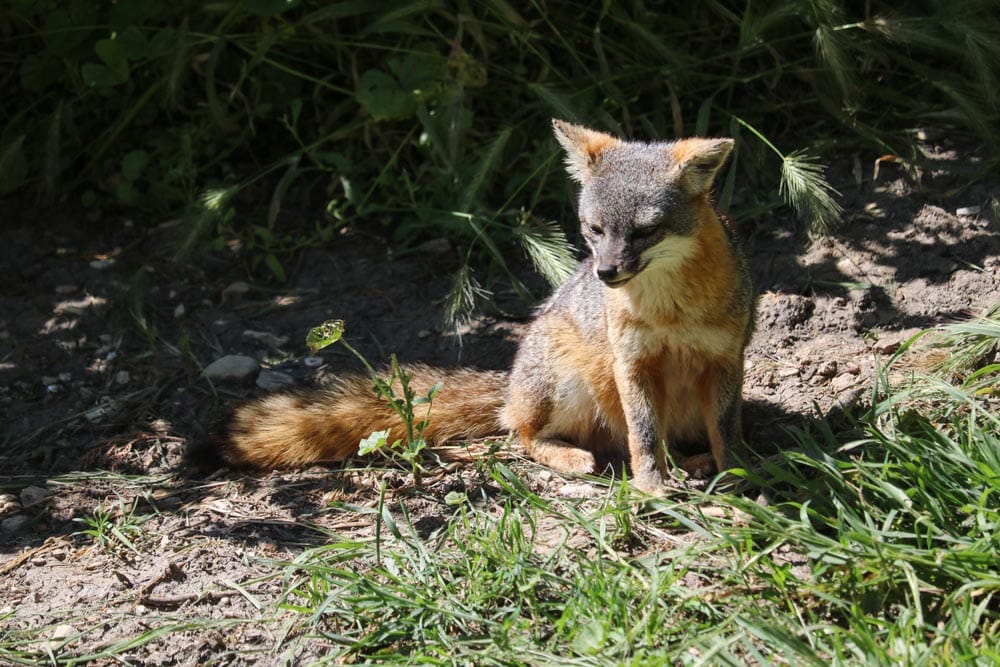
With a nickname that says it all, “the Galapagos of North America”, California’s Channel Islands are a major biodiversity hotspot.
This mountainous archipelago lies just off the coast of Santa Barbara and is a refuge for numerous marine and land animals.
Over 2,000 species of plants and animals live in Channel Islands National Park, including three endemic mammals—the Channel Islands fox, deer mouse and spotted skunk—and one reptile—the island fence lizard.
The greatest diversity, however, is found in the surrounding waters. Located at the meeting point of warm subtropical and cool northern ocean currents, these waters burst with life, from micro-plankton to blue whales.
On a boat ride from the mainland, you’re almost certain to spot common dolphins, while California sea lions, harbor seals, gray whales and humpback whales are regular sights as well. Sharks are common in these waters, too.
Orcas, blue and fin whales are less common, but can occasionally be spotted in summer.
- Look for these: Channel Island foxes, whales, dolphins, seals and sea lions
- Do this: boating, kayaking, scuba diving and hiking
Katmai National Park, Alaska
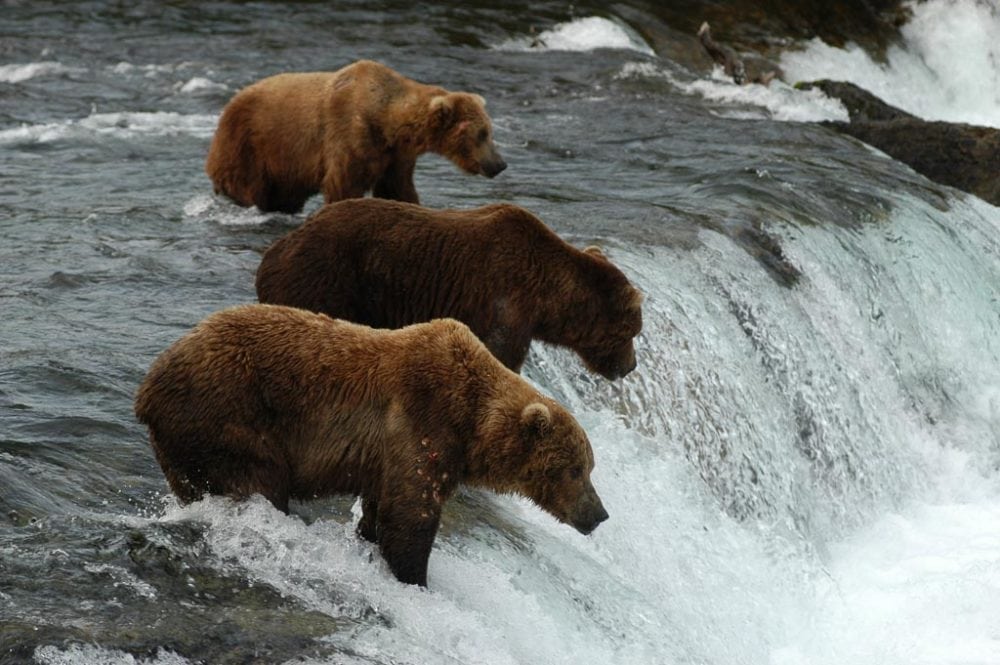
Can you remember a wildlife documentary you watched, perhaps as a kid, in which big brown bears fish for salmon in a waterfall?
Almost certainly, that footage was shot in Alaska’s Katmai National Park, arguably the world’s best place for bear watching.
This is, however, not the cheapest place to get to. No roads lead into the park, so you have to fly into a nearby town, where you would then charter a floatplane to drop you off in the park.
It does require a bit of dedicated saving to make this trip happen, but if you can make there, it’s obviously sensational. This is, after all, one of the best national parks for wildlife photography vacations.
In addition to watching some of the world’s biggest brown bears at Brooks Falls, Katmai also offers amazing canoeing and kayaking, hiking and wilderness camping. Fishing, too, is a popular thing to do here.
Note that the park has only on 5 miles (8 kilometers) of designated hiking trails, but you’re free to explore beyond the trails as you please.
Make sure to know what you’re doing, though. This is one of the wildest and remotest regions on earth, offering a phenomenal national parks experience without the crowds.
- Look for these: brown bears and salmon
- Do this: boating, flightseeing, and backcountry hiking and camping
Theodore Roosevelt National Park, North Dakota
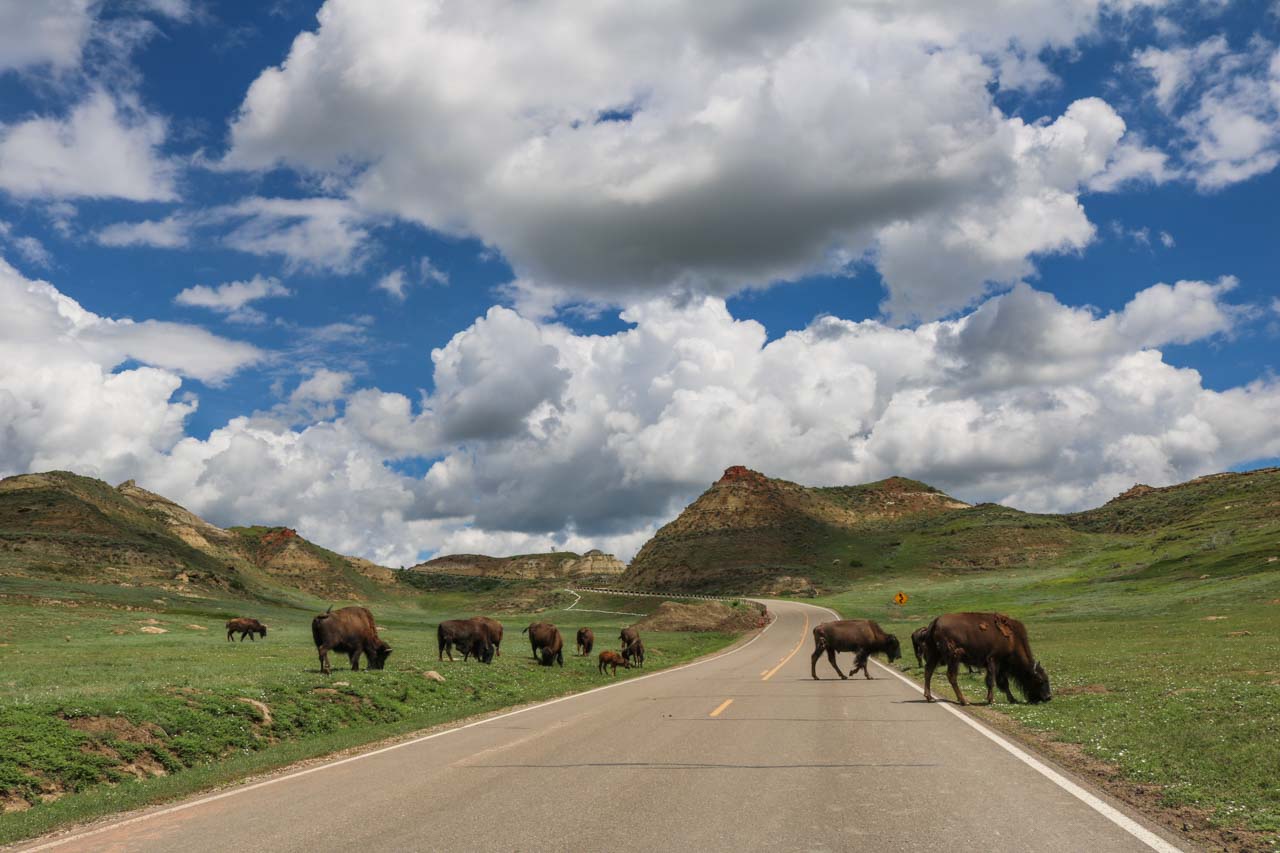
Comprising three separate sections of badlands in North Dakota—the North Unit, South Unit and Roosevelt’s Elkhorn Ranch—, Theodore Roosevelt National Park was obviously named after America’s most adventurous president.
Teddy R. came to the badlands in 1883 to hunt bison, but soon fell in love with the freedom and roughness of the American West.
It was that early passion for the outdoor lifestyle that, later, during his presidency, influenced his groundbreaking conservation policies. (He singlehandedly created five national monuments that became national parks later on, including Grand Canyon and Olympic.)
While that presidential history is certainly fascinating, nature lovers will find delight in the numerous wild animals that live in this rugged park.
Both the North and South Units have a scenic drive as well as about 100 miles (160 kilometers) of trails for hiking and horseback riding.
Whatever activities in Theodore Roosevelt National Park you choose, you’re virtually guaranteed to spot American bison grazing in the plains. Backed by the imposing badlands and basking in later-afternoon sunlight, this is an epic, all-American sight.
Its vast herds of wild bison make Theodore Roosevelt National Park one of the best places to see wildlife in the USA. But it’s not only bison that live here, though.
The prairies are home to a number of other large grazing animals, too, such as elk, white-tailed deer, mule deer and wild horses—aka mustangs.
With cunning coyotes roaming these lands and prairie dogs calling loudly when they spot one, it really doesn’t get more “cowboy” than this.
- Look for these: American bison, elk, mustangs, coyotes and prairie dogs
- Do this: scenic driving, hiking and horseback riding
More About Theodore Roosevelt National Park
- Park Website
- Travel Guide
- Topographic Map
- Top Things To Do in Theodore Roosevelt National Park
- Accommodation
Isle Royale National Park, Michigan
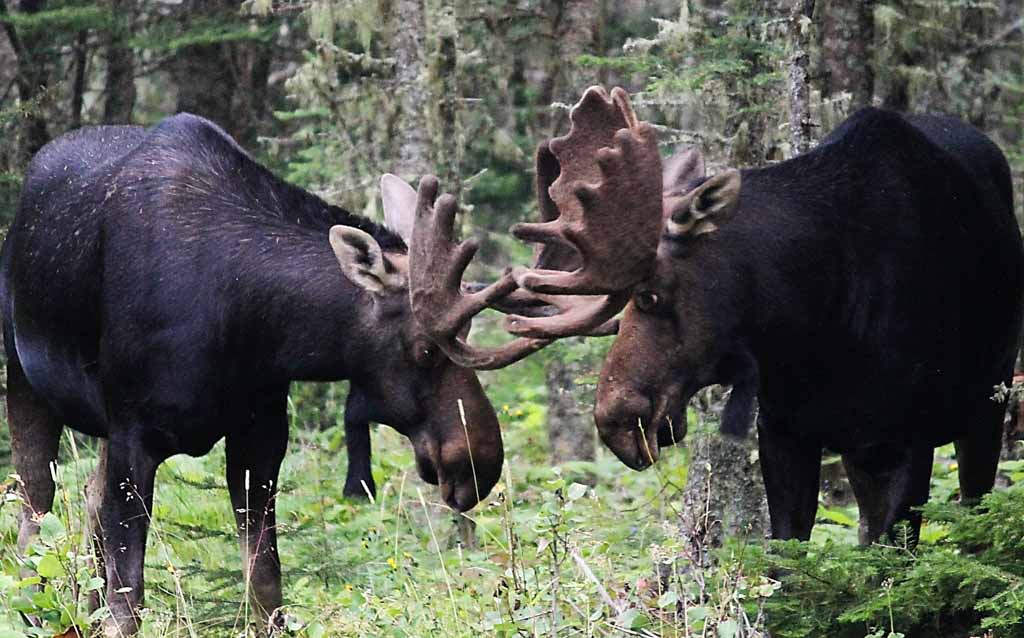
One of the least visited national parks in the lower 48 states, Michigan’s Isle Royale National Park is one of those places where it’s still possible to really get away from it all.
For people who are looking for wild nature, remote adventures and world-class national park wildlife viewing, Isle Royale National Park, located in the northwestern corner of Lake Superior, the world’s largest freshwater lake, is absolute bliss.
Backpackers, campers, hikers and kayakers alike will find excitement here. Numerous hiking trails zigzag across the island, while various campgrounds offer wilderness accommodation.
Only accessible by boat and seaplane, this isolated island is home to wolves and hundreds of moose. The numbers vary greatly from year to year, though.
Especially the wolf population has struggled recently—there were only two left at the end of 2017—and a relocation project to add more individuals is now underway.
Nevertheless, both species are common sightings in Isle Royale National Park and part of the longest running predator-prey study in the world.
- Look for these: moose and wolves
- Do this: kayaking, hiking and camping
More About Isle Royale National Park
Virgin Islands National Park, U.S. Virgin Islands
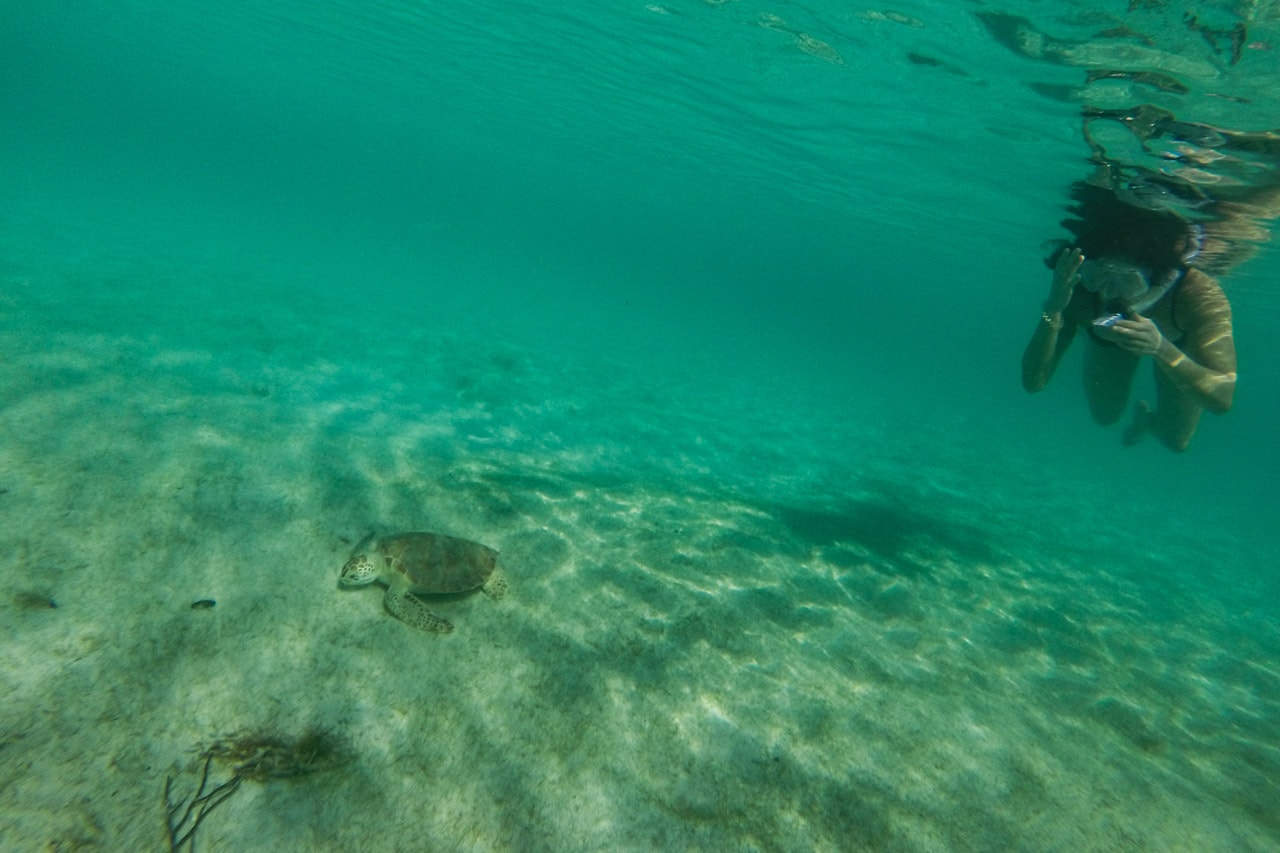
Quite possibly the most tropical place in the United States, the U.S. Virgin Islands in the eastern Caribbean are a phenomenal place to go snorkeling, swimming and scuba diving. As you may expect, this region has more than its fair share of coral reefs and palm tree-lined beaches.
Virgin Islands National Park, one of the greatest island national parks in the USA, covers almost all of Hassel Island and about 60% of St. John, as well as thousands of acres of surrounding waters.
With about 50 species of coral and more than 300 fish species, this is one of the world’s best snorkeling and diving destinations.
A major highlight in this tropical national park is its underwater snorkeling trails, among the first of their kind in the world. Beginning snorkelers are advised to start with the self-guided Underwater Trail in Trunk Bay.
- Look for these: green and hawksbill turtles, dolphins, tropical fish, stingrays, octopuses, pelicans and hummingbirds
- Do this: snorkeling, scuba diving and hiking
More About Virgin Islands National Park
- Park Website
- Travel Guide
- Topographic Map
- Most Beautiful Beaches in Virgin Islands National Park
- Best Views in Virgin Islands National Park
- Best Hikes in Virgin Islands National Park
- Accommodation
Denali National Park, Alaska
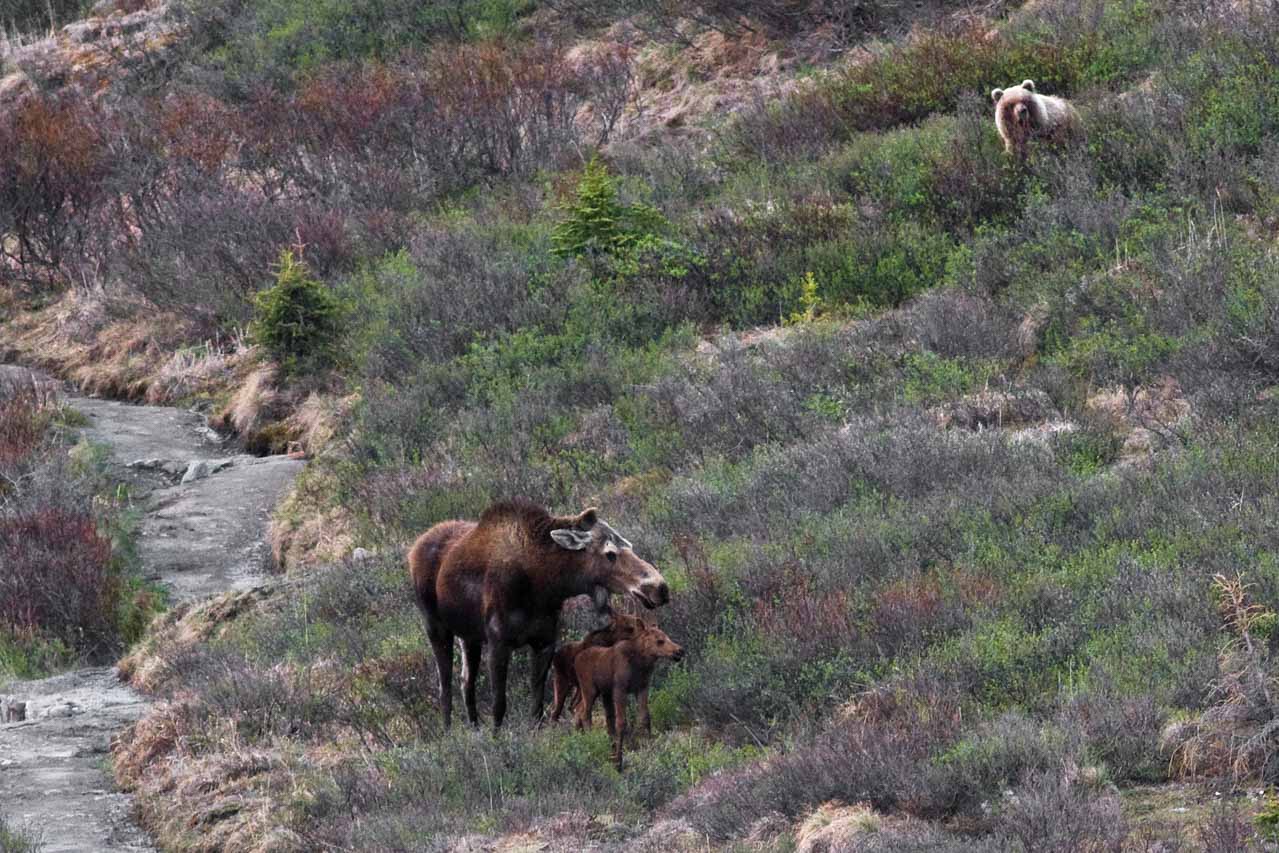
A national park of epic proportions, Denali National Park encompasses six million acres (25,400 km2) of deciduous taiga, tundra, glaciers, forests and mountain ranges, including North America’s highest peak and the park’s namesake—Denali.
Bisected by only one road, this vast wilderness houses wild animals large and small.
The park’s “big five”—caribou, moose, grizzly bears, Dall sheep and wolves—are its main attraction.
In fact, this is probably the only national park in the U.S. where you can spot all five in just one day, making it one of the absolute best parks for wildlife watching in Alaska. That’s not to say some of the best wildlife viewing in the world.
In addition to these five icons of nature, the park is also home to 34 other mammals, 169 bird species and 14 species of fish.
Wilderness characterizes this rugged park and the best way to really experience it is on a long hike, a bicycle ride, a snowmobile excursion (in winter) or a flightseeing trip.
- Look for these: grizzly bears, caribou, wolves, moose and Dall sheep
- Do this: cycling, (overnight) hiking, flightseeing and, in winter, mushing and snowmobiling
More About Denali National Park
Learn What to Do When Encountering a Grizzly Bear While Hiking
Everglades National Park, Florida
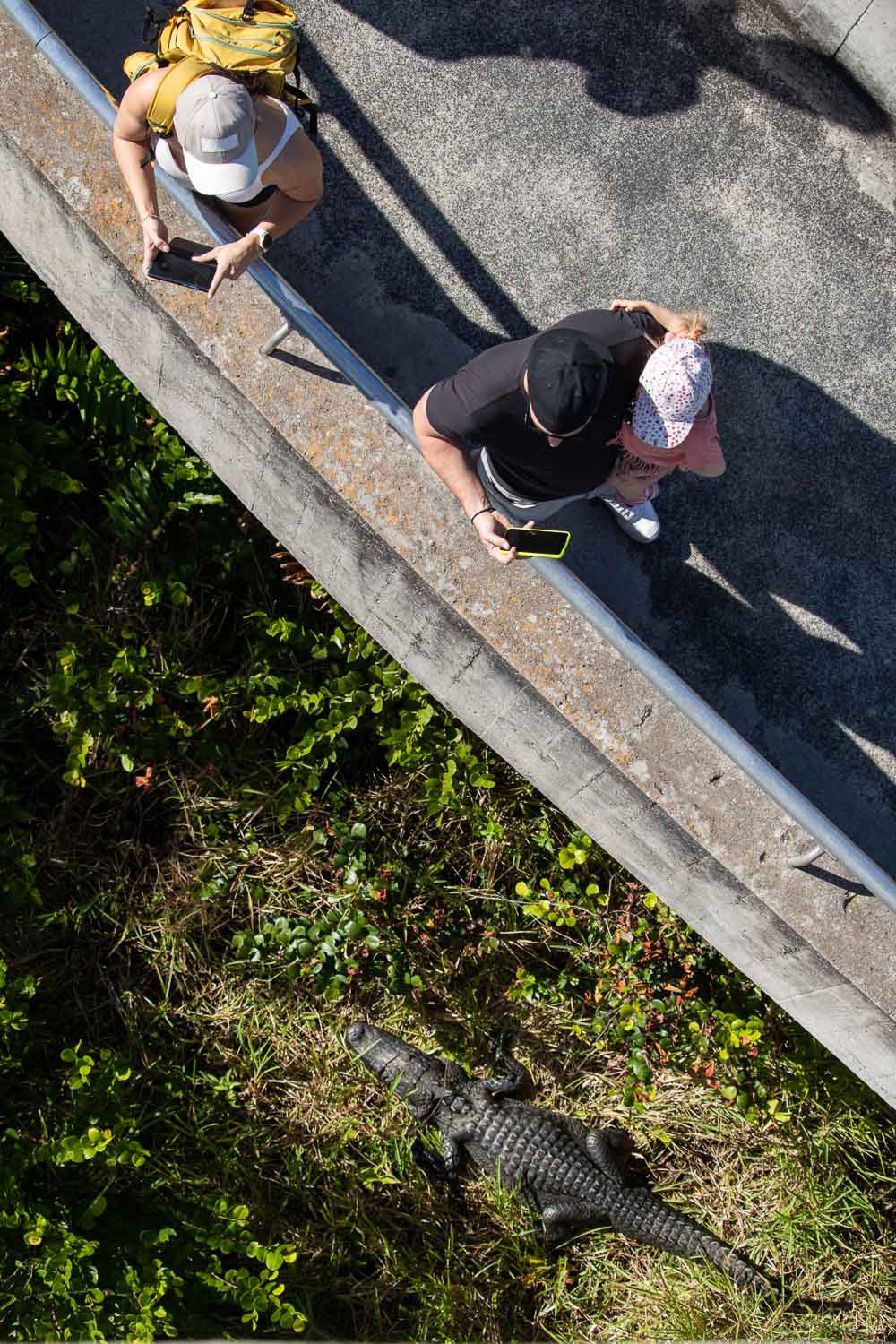
The vastness of Everglades National Park is difficult to put in words. All I can say is that it’s the third-largest national park in the contiguous United States, after Death Valley and Yellowstone.
It’s also the largest tropical wilderness in the country and the largest mangrove ecosystem in the Western Hemisphere.
Additionally, as one of the three great national parks around Miami, it’s super-accessible, too. The park’s main visitor center is only about an hour from downtown Miami.
One of the greatest wildlife parks in the U.S., its biodiversity is just sensational, highlighted by the fact that this is one of only three places on Earth that are a UNESCO World Heritage Site, an International Biosphere Reserve and a Wetland of International Importance.
While most American national parks protect specific geographic characteristics of a landscape, Everglades was the very first that was created to preserve an ecosystem.
Its immense network of wetlands, waterways and forests is unique in the world, a hugely important nesting area for countless water birds, a habitat for fresh- and saltwater fish, and a last refuge for threatened animals such as the West Indian manatee, the Florida panther and the American crocodile.
The best way to spot wildlife in Everglades National Park is hiking, kayaking and going on guided tours on those iconic airboats.
- Look for these: alligators and wading birds
- Do this: canoeing, kayaking, airboat touring, hiking and fishing
More About Everglades National Park
- Park Website
- Travel Guide
- Topographic Map
- Where to See Wildlife in Everglades National Park
- Top Attractions on the Everglades Main Park Road
- Best Things to Do in Flamingo Everglades
- Best Things to Do in Shark Valley Everglades
- Best Everglades Bike Trails
- Accommodation
Shenandoah National Park, Virginia
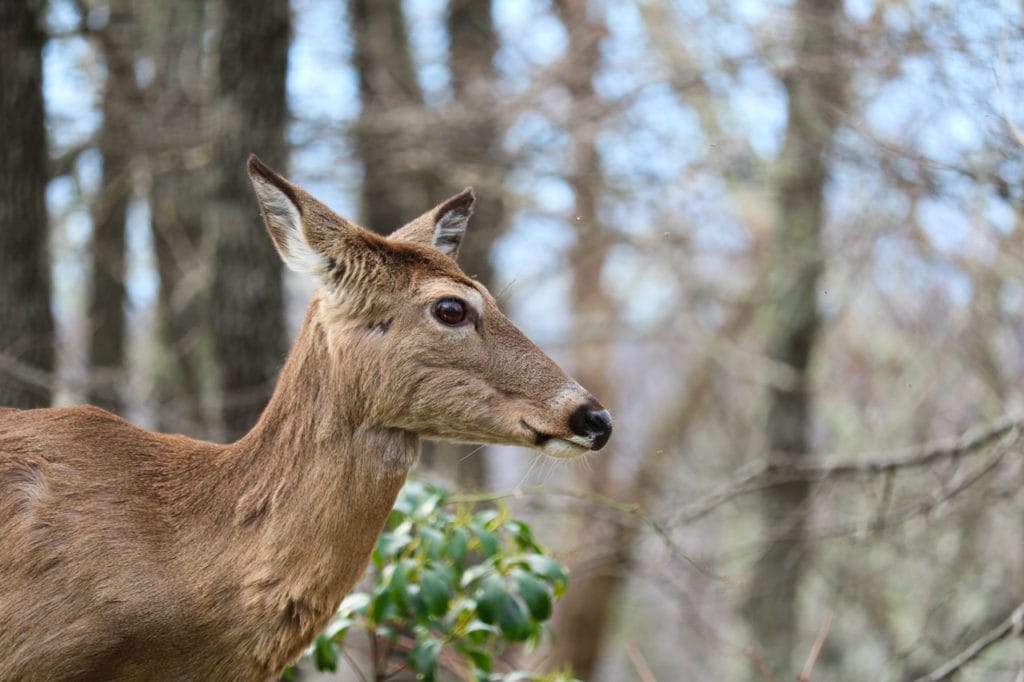
In central Virginia, along the crest of the Blue Ridge Mountains, Shenandoah National Park protects an area of historic pioneer country that’s been returned to nature.
Once home to Appalachian farming communities, these ridges and valleys are now once again the territory of thriving wildlife populations.
Water and time have shaped these glorious, rolling mountains—among the oldest in the world—for eons, creating a landscape of bubbling streams, roaring waterfalls, wooded hollows and rocky summits. This lush environment is one of sheer abundance.
Various animals thrive here. It’s one of the best places to see black bears in the U.S., but the park also has large populations of white-tailed deer, coyotes, beavers and raccoons.
Additionally, there are 32 fish species found in the park’s rivers and ponds, and more than 200 species of birds, 30 of which live in the park year-round.
The best way to go wildlife watching in Shenandoah National Park is a combination of driving along Skyline Drive, the park’s only road and among the greatest national park roads in the country, and hiking its numerous trails.
Always keep an eye out for wildlife, whether driving or hiking. Deer sightings are basically guaranteed, while spotting a black bear or two is not unusual at all.
This is also one of the most dog-friendly national parks in the country. You can take your pet on most Shenandoah hiking trails, provided it’s on a leash. Make sure, though, that it’s well-behaved and listens to you in case of a black bear encounter.
- Look for these: black bears and white-tailed deer
- Do this: hiking, scenic driving, cycling, waterfall hunting and camping
More About Shenandoah National Park
- Park Website
- Travel Guide
- Topographic Map
- Best Shenandoah Hikes
- Top Things To Do in Shenandoah National Park
- Where to See Wildlife in Shenandoah National Park
- Viewpoints
- Accommodation
Olympic National Park, Washington
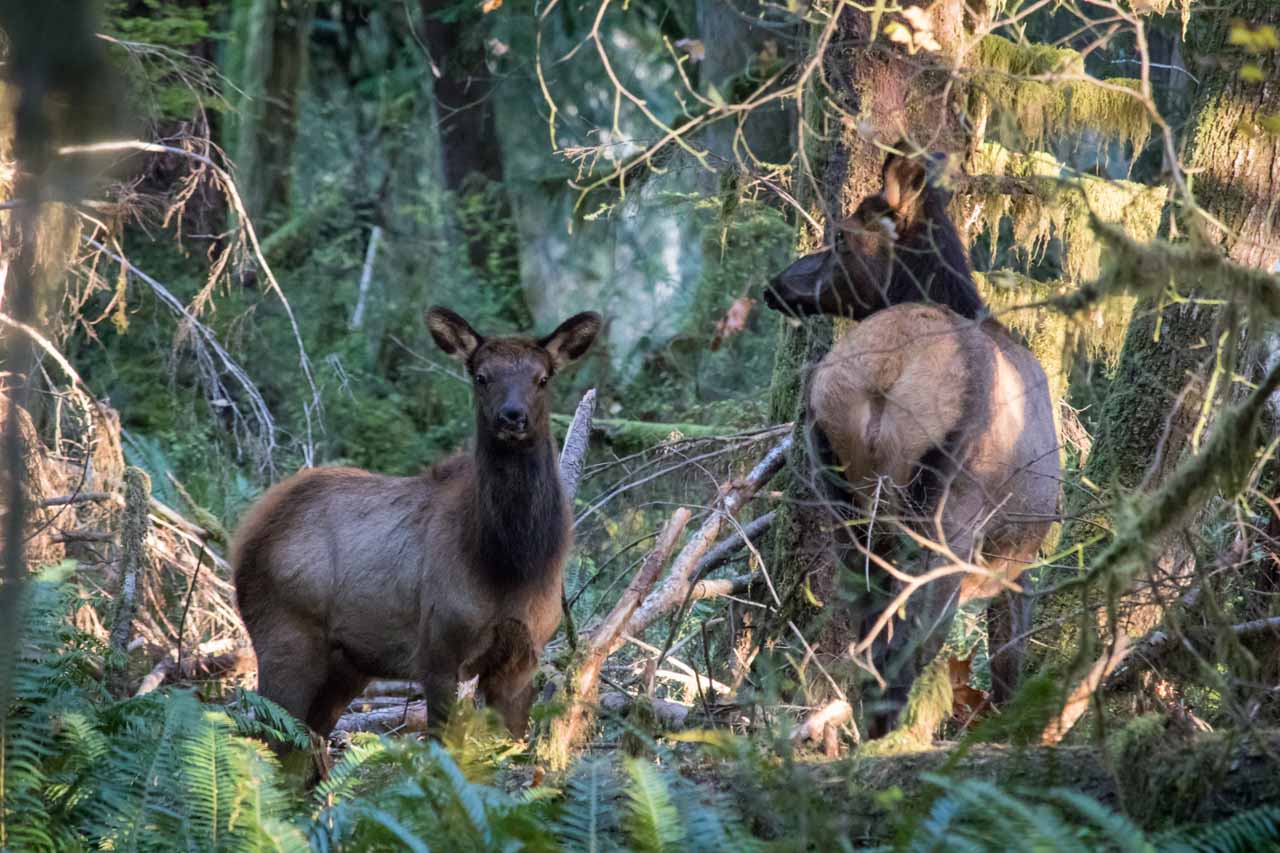
The many different landscapes in Olympic National Park, ranging from snowcapped mountains to sandy beaches and temperate rain forests, provide a home to a wide variety of animals.
In the mountains, you have a relatively good chance to spot deer and bears, while the meadows are prime viewing areas for the majestic Roosevelt elk. The park has the largest unmanaged Roosevelt elk herd in the Pacific Northwest.
One of the park’s most exceptional animals, however, is not a huge mammal, but rather the opposite—the banana slug, which can grow almost a foot (25 centimeters) long.
Additionally, the Olympic torrent salamander, Olympic snow mole and Olympic marmot can’t be seen anywhere else in the world.
Along the coast, marine life thrives. On coastal hikes or scenic boat tours, sightings of sea otters, seals and sea lions are pretty common. Dolphins, orcas and whales regularly pass by the park’s shores as well.
All this, combined with exceptional diversity and a bunch of attractions, makes Olympic National Park one of the top national parks for wildlife watching in the USA. Its location near Seattle makes it super-accessible as well, and a great Pacific Northwest road trip destination.
- Look for these: Roosevelt elk, bears, deer, banana slugs, sea lions, sea otters, seals, whales and dolphins
- Do this: boating, hiking and camping
More About Olympic National Park
- Park Website
- Travel Guide
- Topographic Map
- Best Olympic Hikes
- Top Things To Do in Olympic National Park
- Accommodation
Glacier Bay National Park, Alaska
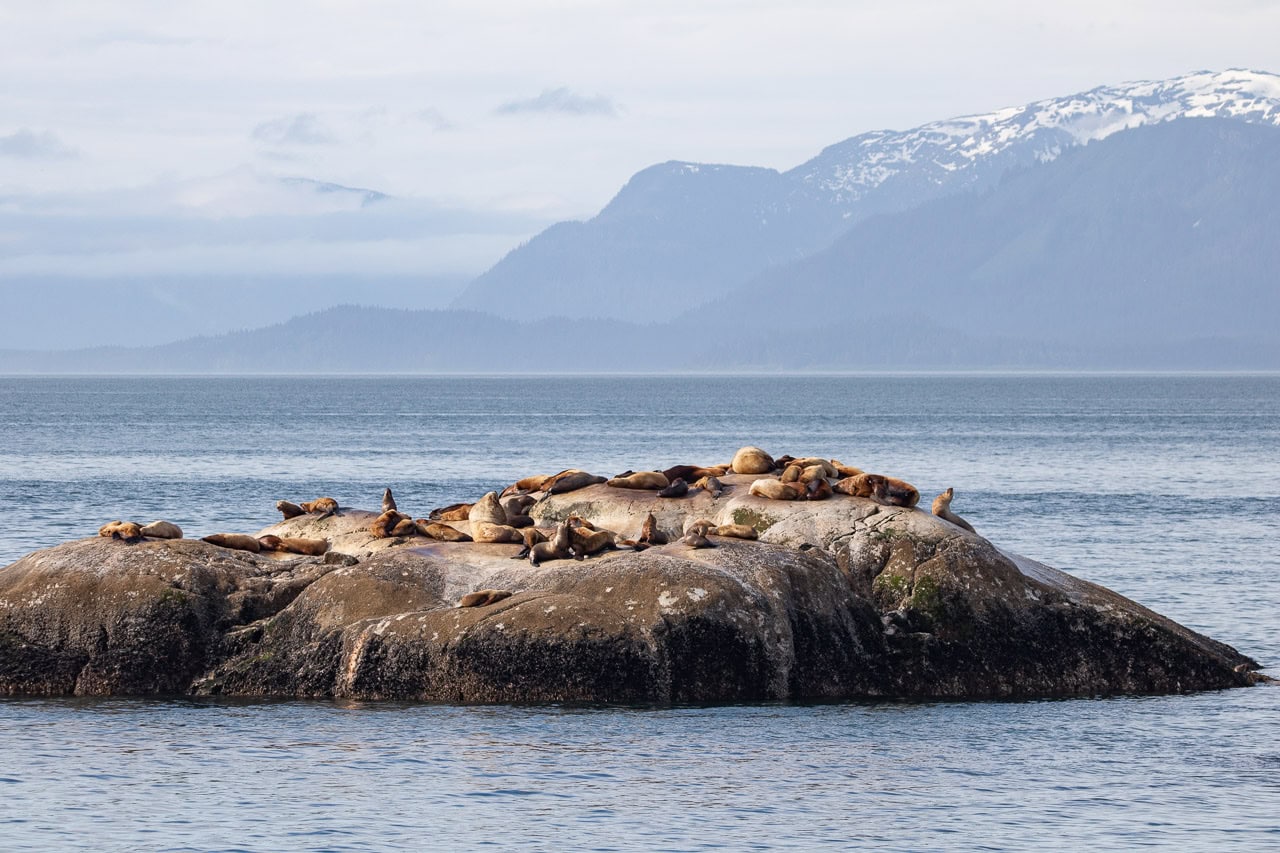
Situated in the Alaskan panhandle, to the west of Juneau, Glacier Bay National Park is a superb place for marine life watching. Characterized by huge glaciers, imposing coastlines, forests and deep fjords, it is part of a much larger, binational UNESCO World Heritage Site.
Limitless adventure opportunities await you in these wild lands and seas, including but not limited to hiking, mountaineering, camping, kayaking, and fishing.
What draws most visitors to this remote park, however, is its world-class wildlife watching, truly some of the best wildlife viewing in the USA.
Basically, everything that lives in Glacier Bay National Park is in some way or the other tied to the nutrient-rich ocean or the fertile shores. About 20% of the park consists of marine waters, while on land, everything is within 30 miles (50 kilometers) from the coast.
The park itself is large and so is its wildlife. This is where you can see brown bears and moose roaming the coasts and forests, and bald eagles soaring overhead.
But it is the waters, however, that house the biggest wildlife spotting spectacle in this park. Orcas, minke whales, sea otters, seals, sea lions, humpback whales, and many other marine animals are present in the region, depending on their migration seasons.
- Look for these: orcas, whales, sea otters, seals, sea lions, puffins, bald eagles, bears, mountain goats, and moose
- Do this: kayaking, hiking, mountaineering, flightseeing and camping
More About Glacier Bay National Park
- Park Website
- Travel Guide
- Topographic Map
- Top Things to Do in Glacier Bay National Park (Bartlett Cove)
- Famous Tidewater Glaciers of Glacier Bay
- Best Hikes in Glacier Bay National Park
- Watching Wildlife in Glacier Bay National Park
- How to Get to Glacier Bay National Park
- Accommodation
Great Smoky Mountains National Park, North Carolina and Tennessee
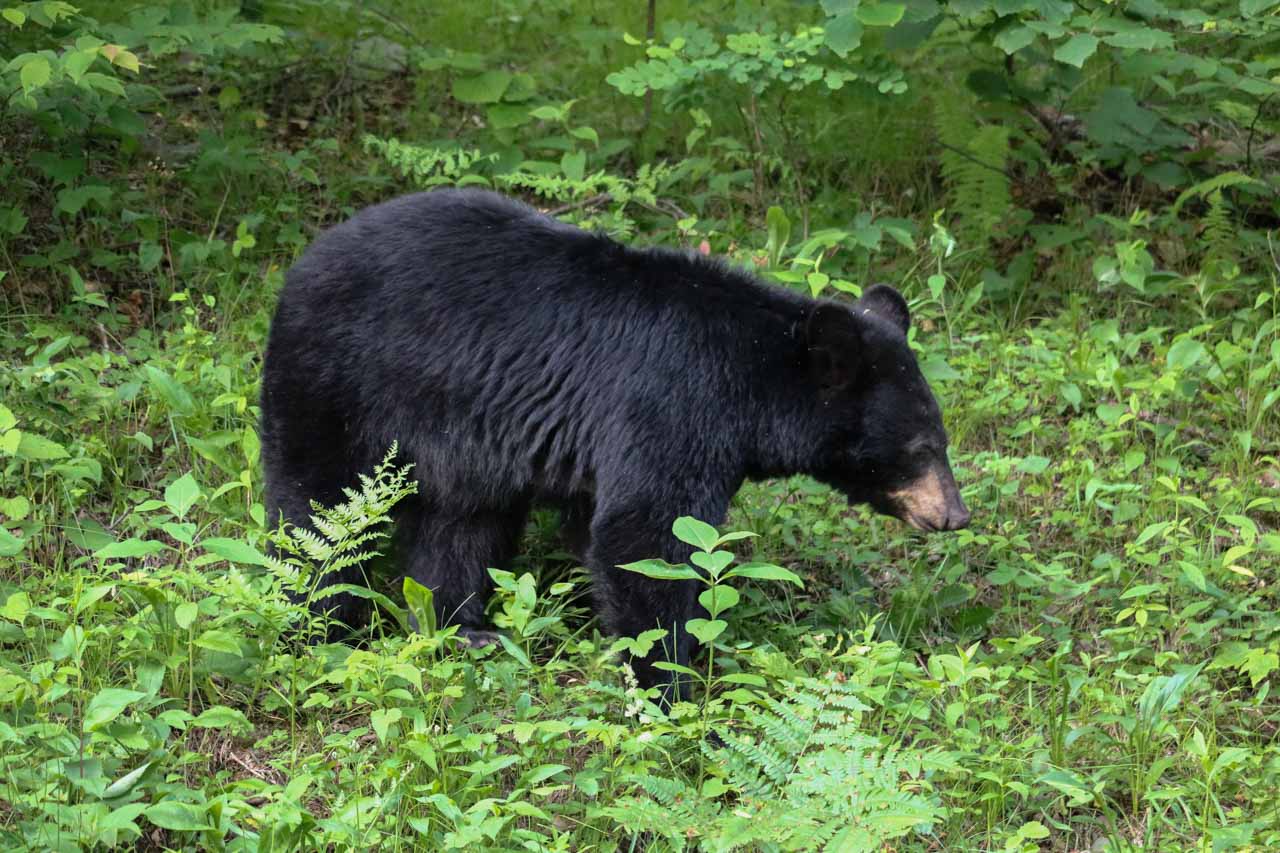
A UNESCO World Heritage Site because of its enormous biodiversity, Great Smoky Mountains National Park is one of the greatest national parks for wildlife watching in America.
A subrange of the Blue Ridge Mountains, which in their turn are part of the much larger Appalachian Mountains, the Great Smokies encompass some of the most expansive wilderness areas in the East.
Wildlife thrives in its deep forests, picturesquely undulating mountains and many streams and rivers. The park is home to more than 200 bird species, 67 native species of fish, over 80 reptiles and amphibians, and about 65 mammals.
The most famous resident of Great Smoky Mountains National Park has to be the black bear.
In fact, this park boasts the largest protected black bear habitat east of the Mississippi, providing a comfy home to about 1,500 individuals. With approximately two bears per square mile, the area has one of America’s densest concentrations of black bears.
Learn What to Do When Encountering a Black Bear While Hiking
Other often-spotted animals include white-tailed deer, groundhogs, squirrels and chipmunks—all the classic forest species of the American East, in other words.
- Look for these: black bears and white-tailed deer
- Do this: hiking, camping and waterfall hunting
More About Great Smoky Mountains National Park
Tip: When you visit Great Smoky Mountains National Park, you can get to Shenandoah National Park via the magnificent Blue Ridge Parkway, another unit in the extensive national parks system.
This allows you to visit the two best national parks for wildlife watching in the eastern United States in one epic road trip.
Glacier National Park, Montana
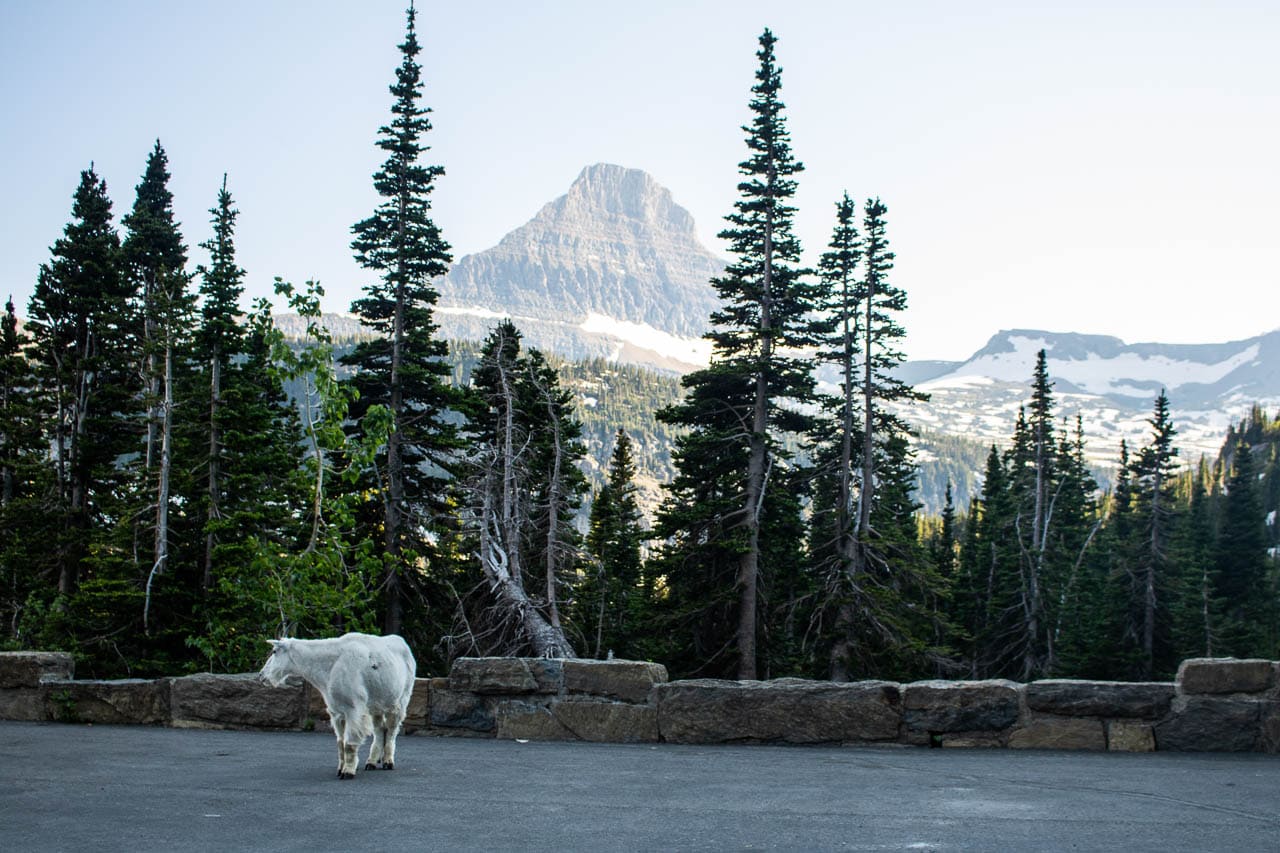
In northern Montana, bordering Canada, lies Glacier National Park, a large wilderness of towering mountains, deep valleys, beautiful glacial lakes and wildflower-covered meadows.
Nicknamed the “Crown of the Continent”, it borders Canada’s Waterton Lakes National Park. Together, these two parks are known as the Waterton-Glacier International Peace Park, established in 1932 and the first of its kind in the world.
These wild lands are home to the healthiest grizzly bear population on the North American continent. So, if you’ve always wanted to see these mighty animals in the wild, Glacier National Park is where your chances are highest.
In addition to grizzlies, if you’re lucky, you might also see gray wolves, mountain lions, bighorn sheep, moose, mule deer, elk and mountain goats, the park’s official mascot.
Just like most similar U.S. national parks for wildlife watching, Glacier offers a plethora of outdoor activities, from epic hiking and cycling to fishing, boating, landscape photography and camping. Truly one of the best places to see animals in the wild in America.
- Look for these: grizzly bears, black bears, bighorn sheep, moose, elk and mountain goats
- Do this: cycling, hiking, canoeing, kayaking and camping
More About Glacier National Park
- Park Website
- Travel Guide
- Topographic Map
- Best Glacier Hikes
- Top Attractions on Going-to-the-Sun Road
- Where to See Wildlife in Glacier National Park
- Accommodation
Rocky Mountain National Park, Colorado
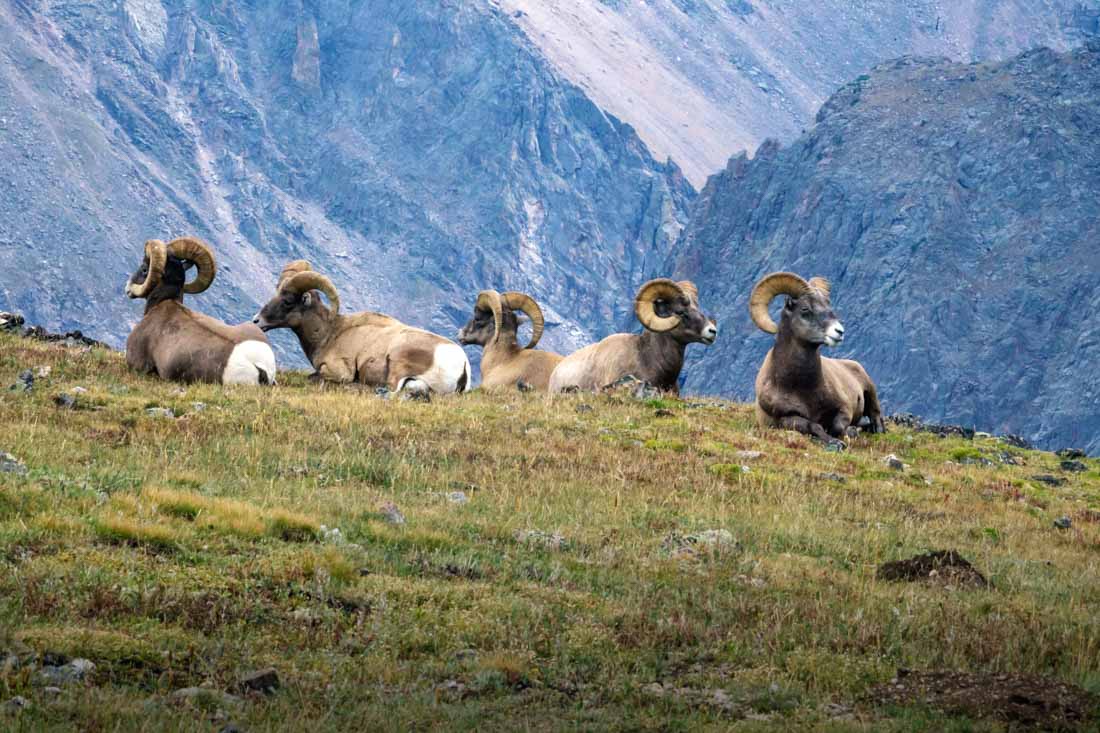
As the nearest national park to Denver, only about 1.5 hours from the city, Rocky Mountain National Park is one of America’s most accessible wildlife national parks.
There’s plenty to see and do in this spectacular mountain park. From scenic car touring on epic Trail Ridge Road to hiking, camping, cycling and enjoying colorful fall foliage, Rocky Mountain is amazingly diverse.
Naturally, this also means there’s a huge variety of wildlife that calls the park home. Thanks to its extraordinary populations of large animals, it’s often considered as one of the best places in America for wildlife viewing.
Those large animals include countless mule deer, a population of about 350 bighorn sheep, a small number of moose, and an elk herd of 600 to 800 individuals.
Just like many other national parks, Rocky Mountain National Park also has its fair share of black bears and mountain lions.
Other, less high-profile animals in Rocky Mountain National Park are numerous bird species, pikas and marmots, bats and beavers.
- Look for these: elk, bighorn sheep, moose, black bear
- Do this: cycling, hiking, scenic driving and rock climbing
More About Rocky Mountain National Park
Mount Rainier National Park, Washington
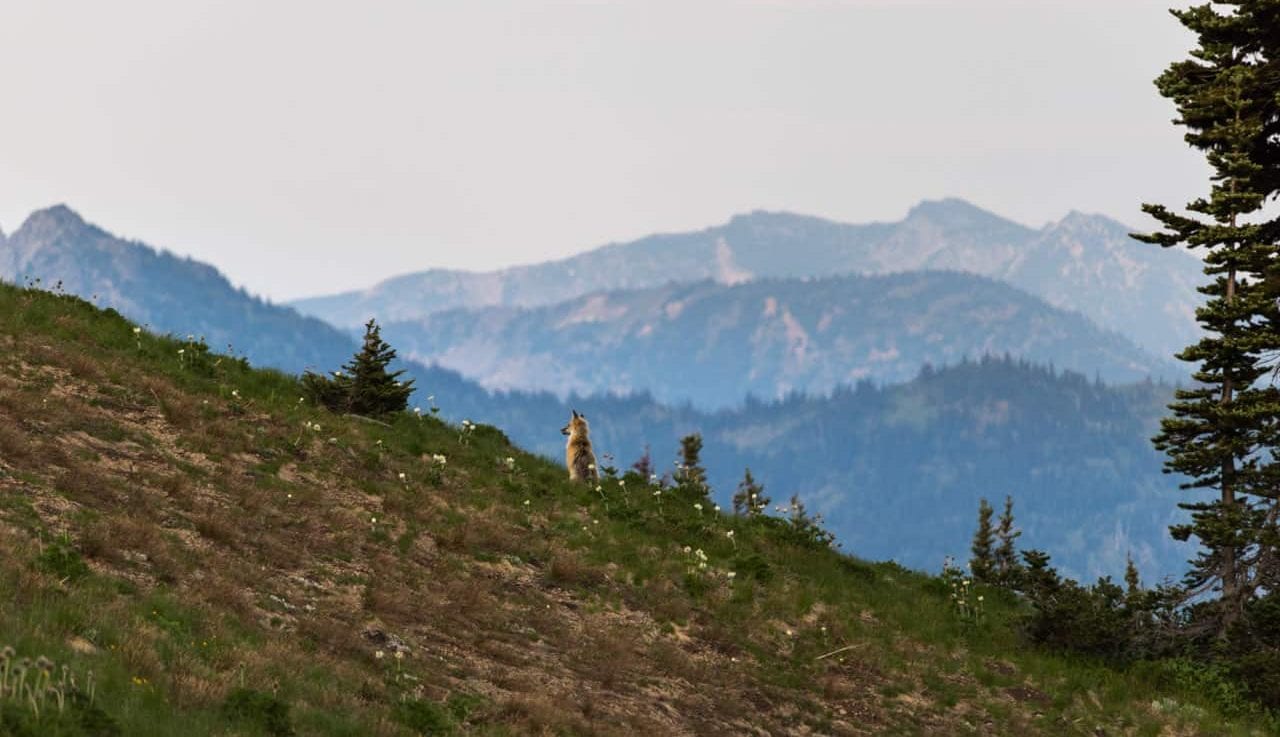
Situated in central Washington, Mount Rainier National Park is centered on the state’s highest mountain: Mount Rainier.
Comprised of deep glacial valleys, pristine old-growth forests, towering mountain peaks and various lakes and rivers, it’s a super-varied park, much more diverse than many people think.
Thanks to its 13,000-foot elevation changes, there are various different climate zones and habitats at Mount Rainier, all of which are home to their own set of fauna and flora.
You’ll find basically all typical Pacific Northwest land animals here. Among the park’s most prominent and visible wildlife are Stellar’s jays, common ravens, Columbian black-tailed deer and Douglas squirrels.
Some more high-profile and popular wild animals in Mount Rainier National Park, although (much) less often seen, are black bears, elk, Cascade red foxes and mountain goats. Mountain lions also call the park home.
- Look for these: elk, black-tailed deer, black bears, Cascade red foxes and mountain goats
- Do this: hiking, wildflower viewing, camping
More About Mount Rainier National Park
- Park Website
- Travel Guide
- Topographic Map
- Best Mount Rainier Hikes
- Top Things To Do in Mount Rainier National Park
- Viewpoints
- Accommodation
Wildlife Viewing Safety Guidelines

Most of this section comes straight from the National Park Service website. I couldn’t have worded it any better than this.
You can help keep yourself and other visitors safe and wildlife wild by setting a good example and following the rules of hiking etiquette. Remember to treat wildlife with proper caution and respect.
The safety of these animals, as well as your own safety, depends on everyone using good judgment and following these eight simple guidelines while viewing wildlife in national parks.
Do Your Research
All U.S. national parks are unique in their own way and have specific wildlife viewing regulations. These are include minimum wildlife watching distances and food storage requirement.
Before hitting the trail, please take a moment to read the park’s rules.
Give Wildlife Room
The best way to stay safe when watching wildlife in national parks is to give animals room to move.
Many parks require you to stay a minimum distance of 25 yards (or meters) from most wildlife and 100 yards from predators like bears and wolves. (Check with your park: for example, Olympic National Park requires a minimum distance of 50 yards no matter the animal.)
Parks provide a unique opportunity to view animals’ natural behavior in the wild. Generally speaking, whenever an animal reacts to your presence, that’s a clear sign you’re too close.
If you’re close enough for a selfie, you’re definitely too close. Don’t be an irresponsible Instagram or Facebook fool.
Use binoculars or a zoom lens and move back if wildlife approach you. Let wildlife be wild and observe from a distance. It’ll benefit both of you.
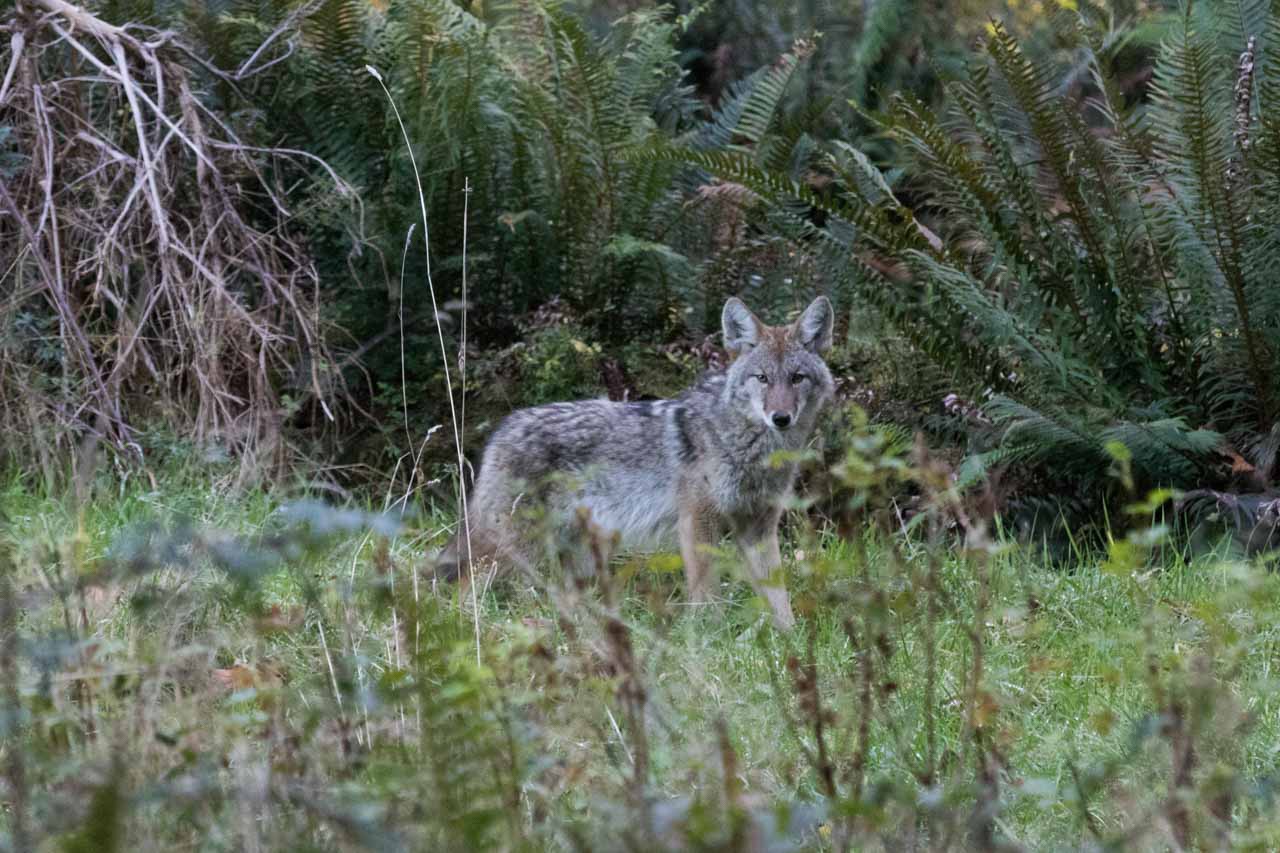
Watch the Road
Vehicle strikes are one of the deadliest types of encounters with wildlife in national parks. Always remember that all roads run through their habitats or migration routes—they were here first, people are just visitors.
Be sure to always follow the speed limits and watch for wildlife that may dart into the road.
When you want to stop to see wildlife, make sure the four wheels of your vehicle are completely off the road. Better yet, park in a designated pull-out. This keeps both wildlife and other motorists safe.
Don’t Disturb
Even when you’re farther away, leaving wildlife alone can greatly enhance your viewing experience. Also, it’s simply the law.
It’s illegal to feed, touch, tease, frighten or intentionally disturb wildlife. Remember that wildlife in national parks are wild. No matter how docile, cute or friendly they look, all animals can be unpredictable when they’re disturbed or surprised.
Therefore, it is recommended that you make noise regularly when venturing into the backcountry. Whistle, sing, talk, clap.
Moreover, interacting with wildlife can also cause harm to both people and wildlife, including injury and disease.
Stay on trails to help keep human presence in predictable areas. In national parks that allow dogs, keep them on-leash (most parks have a 6-foot leash policy), pick up fecal matter and ensure they are vaccinated.
Absolutely do not use bird calls or wildlife calls and attractants.
Know What to Do During an Encounter
If you do happen to unexpectedly come across a wild animal while hiking or any other outdoor activity, it’s very important to know how to behave.
I’ve written a number of wildlife safety guides for a variety of wild animals. Please read them and take that information with you on the trail or into the water.
- Bison Safety
- Black Bear Safety
- Grizzly Bear Safety
- Mountain Lion / Cougar Safety
- Rattlesnake Safety
- Shark Safety
It’s also smart to always have a first-aid kit with you when venturing out into wildlife country.
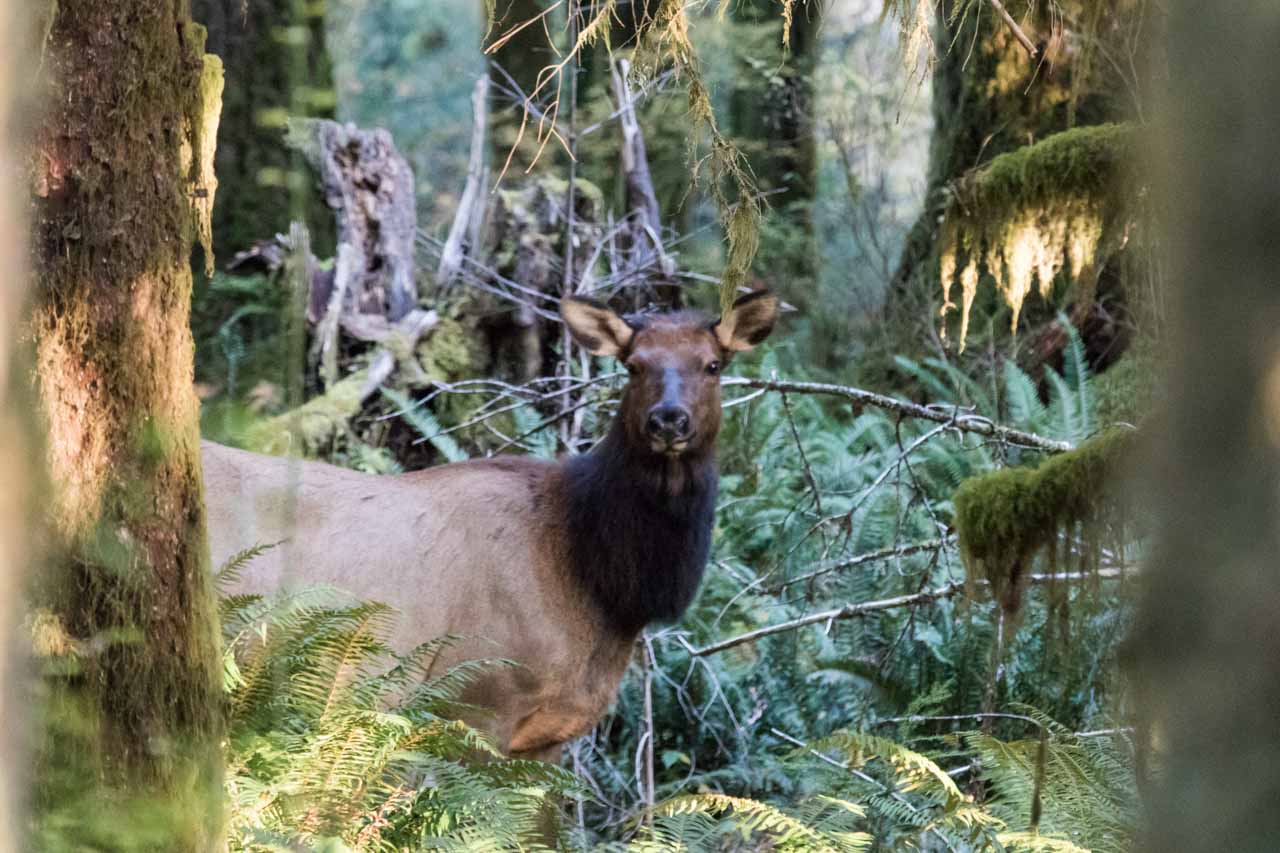
Stash Your Trash and Store Your Food
Feeding wildlife in parks can make them come looking for more. To national park animals, anything that smells like food is treated like food. Access to trash, and even crumbs left on picnic tables can attract them.
Once they have learned that people are a source of food, wildlife can become aggressive toward people. This puts you at risk of injury and the wildlife at risk of being removed and humanely killed by wildlife managers.
Don’t be responsible for the death of wildlife.
Keep a clean picnic area or campsite, store your food and dispose of garbage in the proper containers. Use wildlife-resistant food storage or trash containers where available or required and make sure they’re securely closed.
See Something, Say Something
Tell a ranger if you come into physical contact with national parks wildlife. Also, tell a ranger if you see animals that are sick, dead, or acting strangely, including animals that approach you.
And when you see people who aren’t following these guidelines, let them know what they can do to be a smart wildlife watcher, too, and contact a ranger if necessary.
Be Responsible
Ultimately, staying safe and keeping wildlife wild is up to you!
When you visit one of these awesome national parks for wildlife watching, it’s your responsibility to keep yourself, your family, and the wildlife safe.
Other Best National Parks… Posts
- Best USA National Parks for Waterfalls
- Best USA National Parks to Visit in Spring
- 11 Most Photogenic Buildings in National Parks
- Best USA Island National Parks for Summer Vacations
- Best USA National Parks for Wildflowers
- Greatest Urban National Parks in USA Cities
- Best USA National Parks for Snowshoeing
- Best USA National Parks to See the Stars
- Best USA National Parks for Road Cycling
- All National Parks with Volcanoes in the United States
- Best National Parks for Winter Wonderlands

